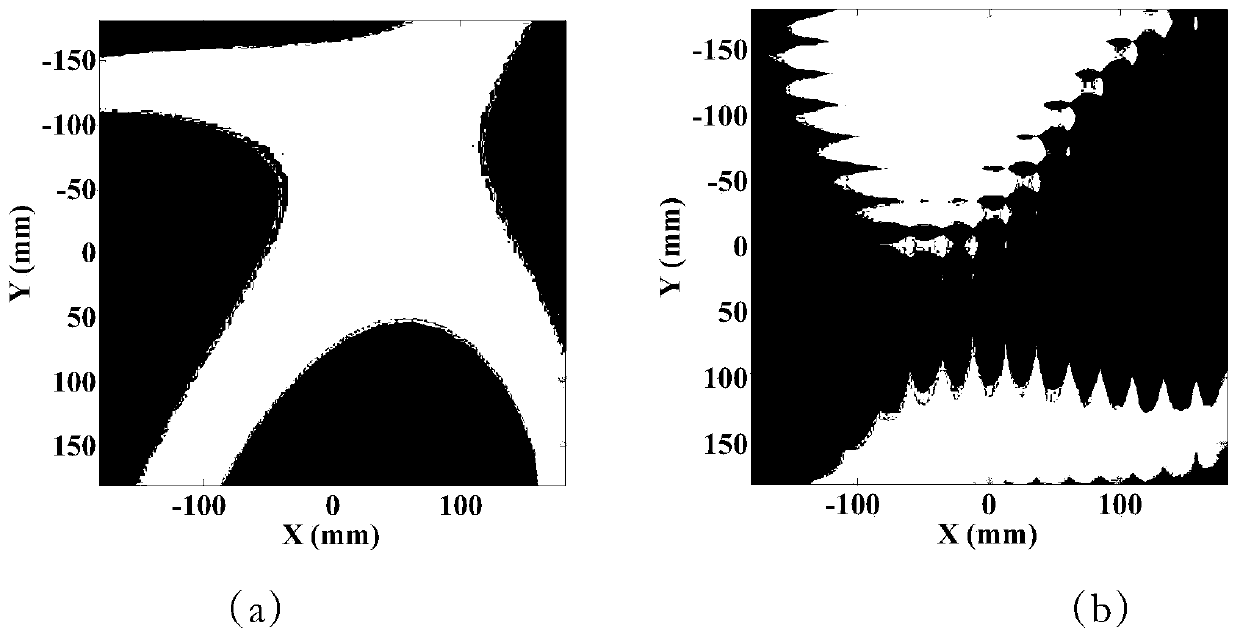Wavefront detection method based on spatial frequency domain reference
A wavefront detection and spatial spectrum technology, applied in the field of wavefront detection based on spatial frequency domain reference, can solve the problems of unguaranteed convergence, need to be improved, slow wavefront inversion, etc., and achieves easy integration and real-time performance. High and versatile effect
- Summary
- Abstract
- Description
- Claims
- Application Information
AI Technical Summary
Problems solved by technology
Method used
Image
Examples
Embodiment 1
[0030] A wavefront detection method based on spatial frequency domain reference, using optical elements to perform two Fourier transforms on the light field of the beam to be measured, the optical elements including but not limited to lenses, parabolic mirrors and spherical mirrors. On the spatial spectrum plane after a Fourier transform, an asymmetric crosshair is introduced as a reference to modulate the light field. The modulation of the light field by the crosshair includes but is not limited to amplitude type and phase type. The light field after the second Fourier transform convolves the crosshair information, and the sensor is used to collect a single near-field intensity map after the second Fourier transform. Preferably, the sensor is a CMOS or CCD, and no introduction The dedicated wavefront sensor has a simple system and strong versatility. It divides a single near-field intensity map into several sub-regions. Under the condition that the number of sampling points in...
Embodiment 2
[0036] The same parts of this embodiment and the first embodiment will not be repeated, and the differences are:
[0037] figure 2 is the wavefront distribution diagram of the beam to be measured, the PV value of the wavefront distortion of the beam to be measured is 4.79 μm, and the RMS value is 1.02 μm. image 3 (a) is the wavefront test result of the traditional Hartmann sensor, image 3 (b) is the wavefront test error diagram of the traditional Hartmann sensor. The PV value of the test error is 0.06 μm and the RMS value is 0.009 μm.
[0038] Using the wavefront detection method based on spatial frequency domain reference disclosed in the present invention, Figure 4 (a) is a single near-field intensity map collected by the CCD after the second Fourier transform, Figure 4 (b) is the near-field intensity distribution map of the first sub-region taken out, Figure 4 (c) is the sub-region Fourier transform map of the first sub-region, such as Figure 5 (a) and Figure ...
PUM
 Login to View More
Login to View More Abstract
Description
Claims
Application Information
 Login to View More
Login to View More - R&D
- Intellectual Property
- Life Sciences
- Materials
- Tech Scout
- Unparalleled Data Quality
- Higher Quality Content
- 60% Fewer Hallucinations
Browse by: Latest US Patents, China's latest patents, Technical Efficacy Thesaurus, Application Domain, Technology Topic, Popular Technical Reports.
© 2025 PatSnap. All rights reserved.Legal|Privacy policy|Modern Slavery Act Transparency Statement|Sitemap|About US| Contact US: help@patsnap.com



